40 Orders of Insects: Lepidoptera
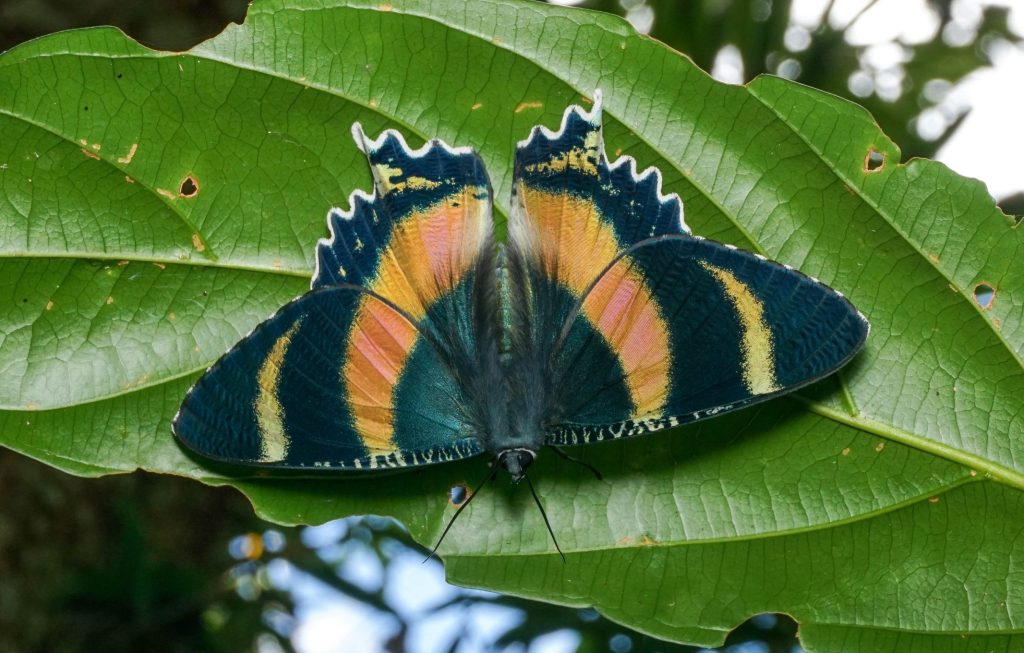
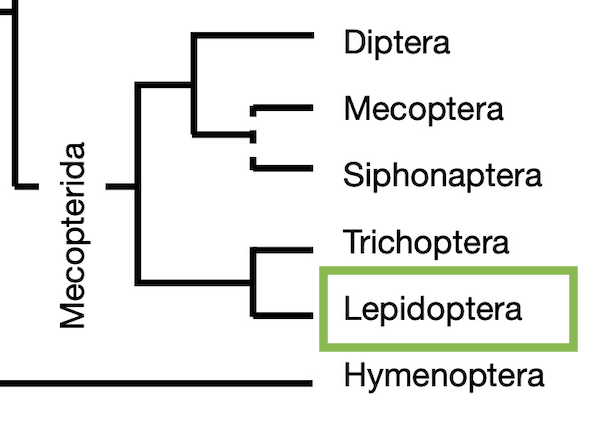
Order Lepidoptera: Moths and Butterflies
Lepidoptera
- common name: moths and butterflies
- from Greek: lepido = scale, ptera = wings; names from the scales covering their wings
- Very high diversity: over 182,000 spp. described worldwide; about 21,000 species in Australia; second largest order of insects
- ca. 65% of Order consists of “microlepidoptera”
- occur throughout Australia with distribution mainly linked to larval food plant requirements
- butterflies: mostly diurnal (few crepuscular); generally pupate in the open, often hanging from vegetation (i.e. a chrysalis)
- moths: mostly nocturnal, although some diurnal (as in photo above)
- adults are generally nectar feeders, although some do not feed
- larvae generally herbivorous, although some carnivorous
Characteristics of Lepidoptera
Adults
- Small to large with an enormous size range, 3-250 mm wingspan; body covered in scales
- hypognathous, haustellate mouthparts, nearly all have a long coiled proboscis
- large compound eyes, ocelli present
- antennae multisegmented; long & slender or comb-like (pectinate) in moths, clubbed in butterflies
- two pair of large membranous wings covered in overlapping scales; legs slender and delicate
Immatures
- immature stages (larvae, caterpillars)
- scelerotised head with mandibulate mouthparts; labial spinnerets able to produce silk
- three pairs of jointed legs on thorax; often with abdominal prolegs (unsegmented)
Lepidoptera species diversity may be due to:
- specialised herbivorous larvae with chewing mouthparts
- ability to produce silk
- specialised nectar-feeding adults; nectar generally not protected by plant allelochemicals
- nectar feeders utilise almost any flowering plant
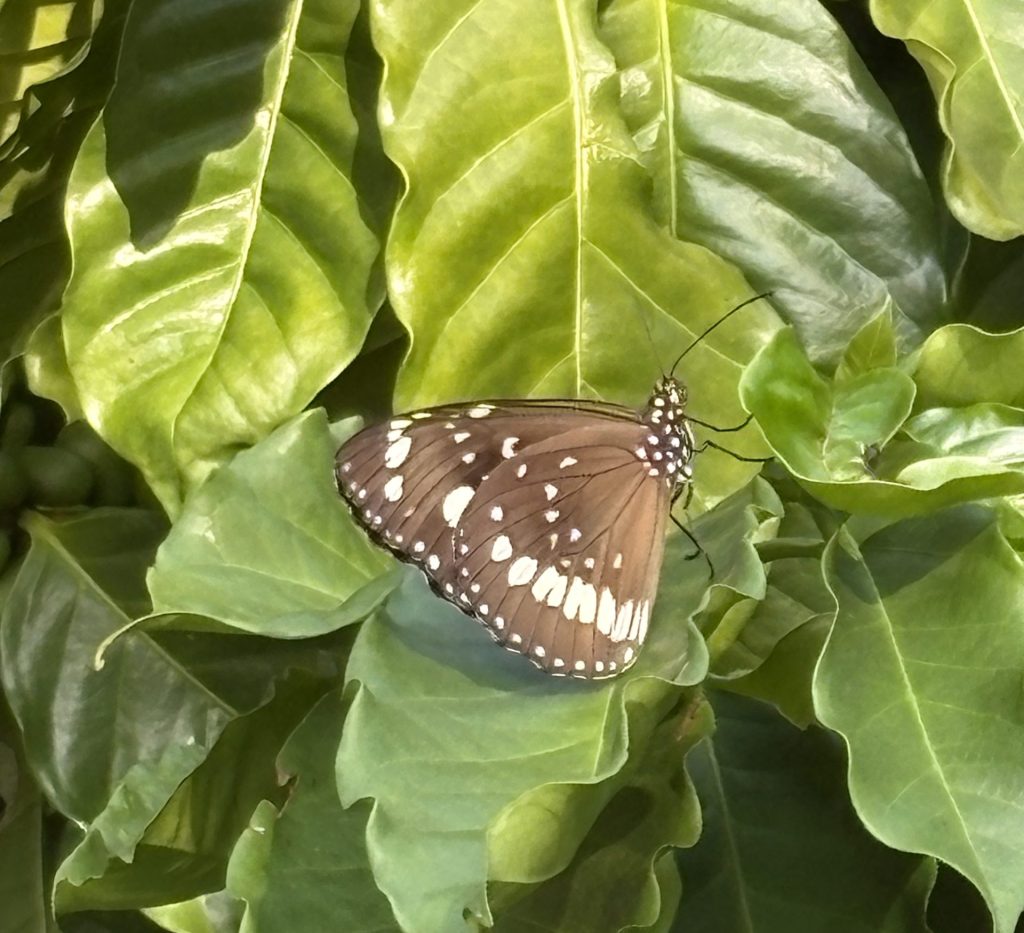
Economic importance
Larvae, called caterpillars, are predominantly terrestrial, phytophagous and have a narrow host range. They comprise some extremely important pests, for example, Helicoverpa armigera (called corn earworm, tobacco budworm or cotton bollworm, depending on country and location) that feeds on many crops including cotton.
- many agricultural pests (loopers, cutworms, armyworms, bollworms)
- pests of stored products (Indian meal moth)
- clothes moths: eat wool, fur, feather, silk, felt.
Beneficial Lepidoptera
- silk production
- biological control of weeds
Diversity of feeding habits
- some eat leaf margins
- pit hole feeders
- skeletonisers
- leaf miners
- leaf rollers (rolled by larva, not adult)
- stem and wood borers
- gall formers
- a few are predatory
- a few are parasites of scales, planthoppers
- a few feed on animal hair (e.g. clothes moths)
- some species, the wax moth, Galleria mellonella, feed in bee colonies on wax and food stores and can even biodegrade polyethylene
Avoidance of predation
- Concealment: Use leaves, sticks etc to hide themselves e.g. leafminers, stem-borers, gall-formers, leaf-rollers, case-bearers, bagworms, web-makers.
- Cryptic colouration
- Camouflage: A few change colour to match background
- Aposematic coloration: Bright colours which act as warning to potential predators e.g. monarch butterfly.
- Chemical defences: Use repellent secretions which are often sequestered plant toxins or eversible “stink glands” or they spray irritants from prosternum.
- Irritating hairs: Chemical and/or mechanical irritation is caused by urticating hairs. They are barbed hairs that readily break off the larval epidermis. One species incorporates larval irritating hairs into its cocoon: adult collects these and distribute them over egg masses.
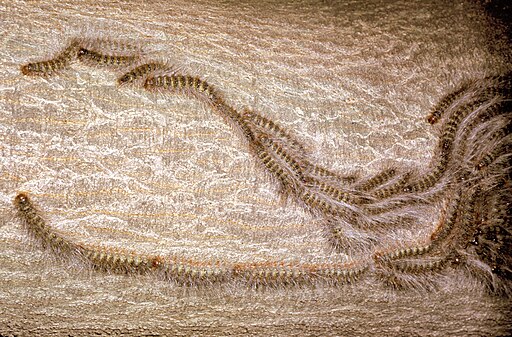
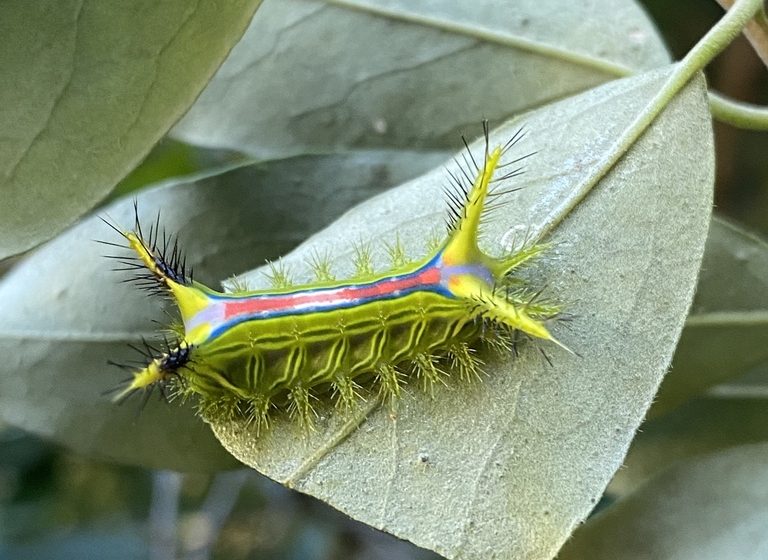
Keen to learn more?
Read about one of the world’s biggest moths: the Hercules moth from Australia!
One of Australia’s special pollinators: the Boronia moth
Take a look at some of the Australian micro-moths — many are very challenging to identify!
Topic Review
Do you know…?
- the main anatomical features of Lepidoptera
- the economic importance of Lepidoptera

